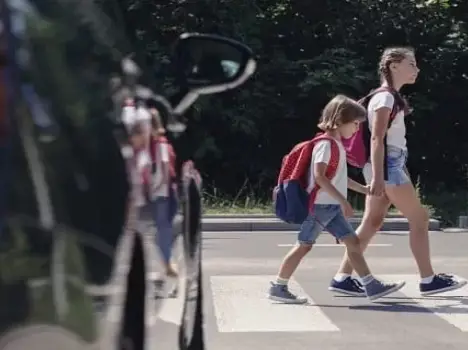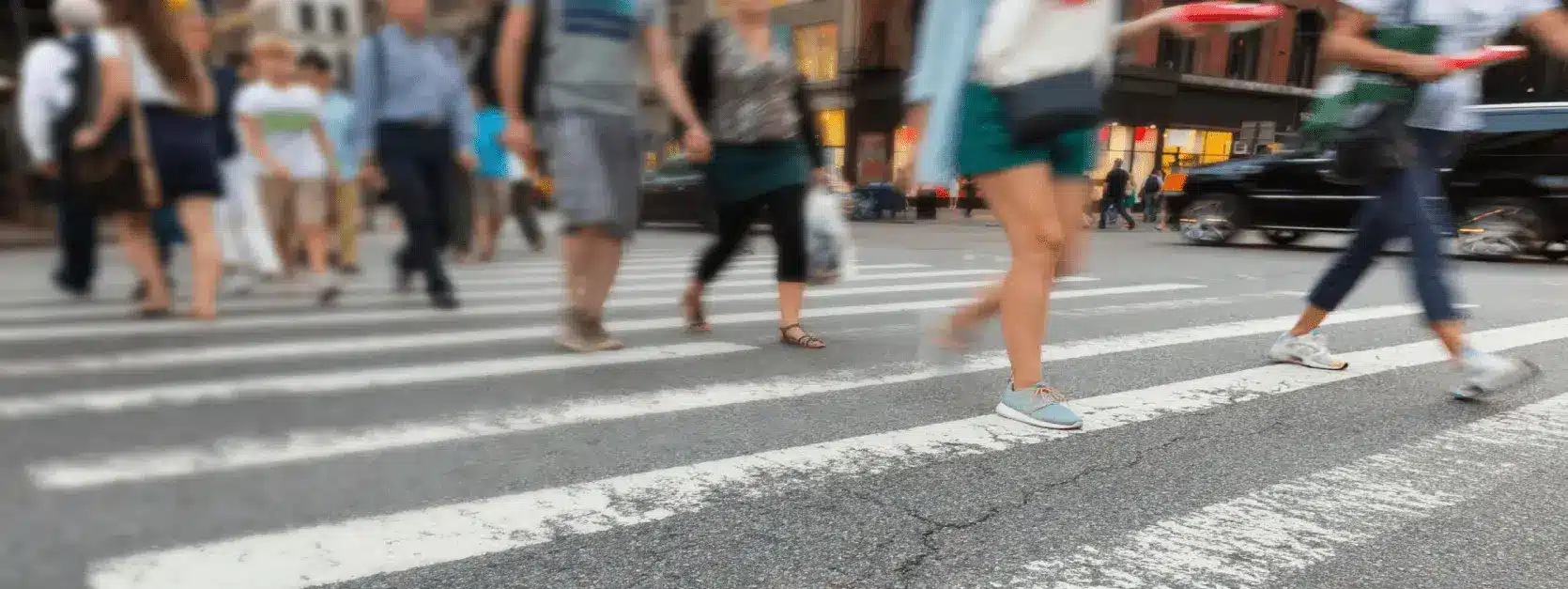Pedestrians struck by a motor vehicle while crossing the roadway within a crosswalk should immediately consult with a personal injury lawyer about their options. These cases are known in the business as “pedestrian knockdowns.” Importantly, recovery by a plaintiff in a pedestrian knockdown case may depend on whether an emergency vehicle played a role in the accident.
Pedestrian Knockdown Cases Involving Emergency Vehicles
For example, in May of 2008, a 13-year-old child was on her way to school. To get to the schoolhouse, the child needed to walk across the intersection of Coney Island Avenue and Avenue K, in Brooklyn. A school crossing guard was standing at the corner of the intersection. The New York City Police Department (NYPD) employed the crossing guard. There was also a traffic light controlling the intersection, with crosswalks and pedestrian signals at each corner.
As the girl entered the crosswalk, the pedestrian signal was in her favor. An ambulance struck the girl as she continued to make her way across the street, within the crosswalk. The girl’s guardian hired a crosswalk injury lawyer and sued the hospital, its driver, and the City of New York/NYPD.
The hospital and ambulance driver asked the judge to dismiss the case. Those defendants argued that since the ambulance was responding to an emergency, they could only be held liable for the accident if the driver acted recklessly. Vehicle and Traffic Law Section 1104 controls the standard of care for those driving authorized emergency vehicles. They argued that the ambulance driver in this case was not reckless in causing the accident. The reckless standard is more difficult to prove than basic negligence.
The City/NYPD also asked the judge to dismiss the case. Specifically, they argued that traffic control is a discretionary governmental function and, as such, the City did not owe a duty to the injured plaintiff. The plaintiff must prove a defendant owed a duty to recover in a negligence case. The crosswalk injury lawyer successfully opposed the motions. The lower court denied both motions and set the case for trial. The defendants then asked the higher court to review the decision.
How the Personal Injury Lawyer Got the Case to Trial

Both sets of defendants appealed the lower court’s decision. The Court noted that the evidence showed that the child entered the crosswalk with the pedestrian signal in her favor.
She was still within the crosswalk when the ambulance struck her.
The Court also explained that although the ambulance driver had a green traffic signal in making a turn, a driver facing a steady green light still has a duty to yield the right-of-way to pedestrians lawfully within a crosswalk. Also, both the school crossing guard and an eyewitness testified that the ambulance did not slow down when the accident occurred.
The ambulance driver testified that his view of the crosswalk was obstructed on the right hand side. Accordingly, the Court agreed with the crosswalk injury lawyer and found that the hospital defendants did not demonstrate an entitlement to summary judgment.
The Appellate Division’s Decision as to the City/NYPD
To impose liability upon a municipality, or a City agency (like the NYPD), there must be a duty or a special relationship. That duty must run from the municipality to the injured plaintiff. A special relationship is formed when a municipality “assumes a duty that generates justifiable reliance by the person who benefits from the duty.”
In this case, the crossing guard testified that she was watching the child cross when the accident occurred. The guard saw the child crossing Coney Island Avenue slowly, with the light in her favor. The crossing guard also heard the ambulance coming and knew that she needed to step in. When the crossing guard saw the ambulance approaching, she blew her whistle. Also, when the child failed to stop, the crossing guard put up her right hand.
The Appellate Court held that the City failed to show the absence of a special relationship with the injured plaintiff. It also found that the City failed to show that the crossing guard’s actions were discretionary and worthy of immunity. Accordingly, the Appellate Court affirmed the lower court’s decision to deny the defendants’ motions to dismiss the case. Cases like these aren’t easy to handle. That is why, it is of upmost importance to contact an experienced team of lawyers that are equipped to help you in this time of need.




